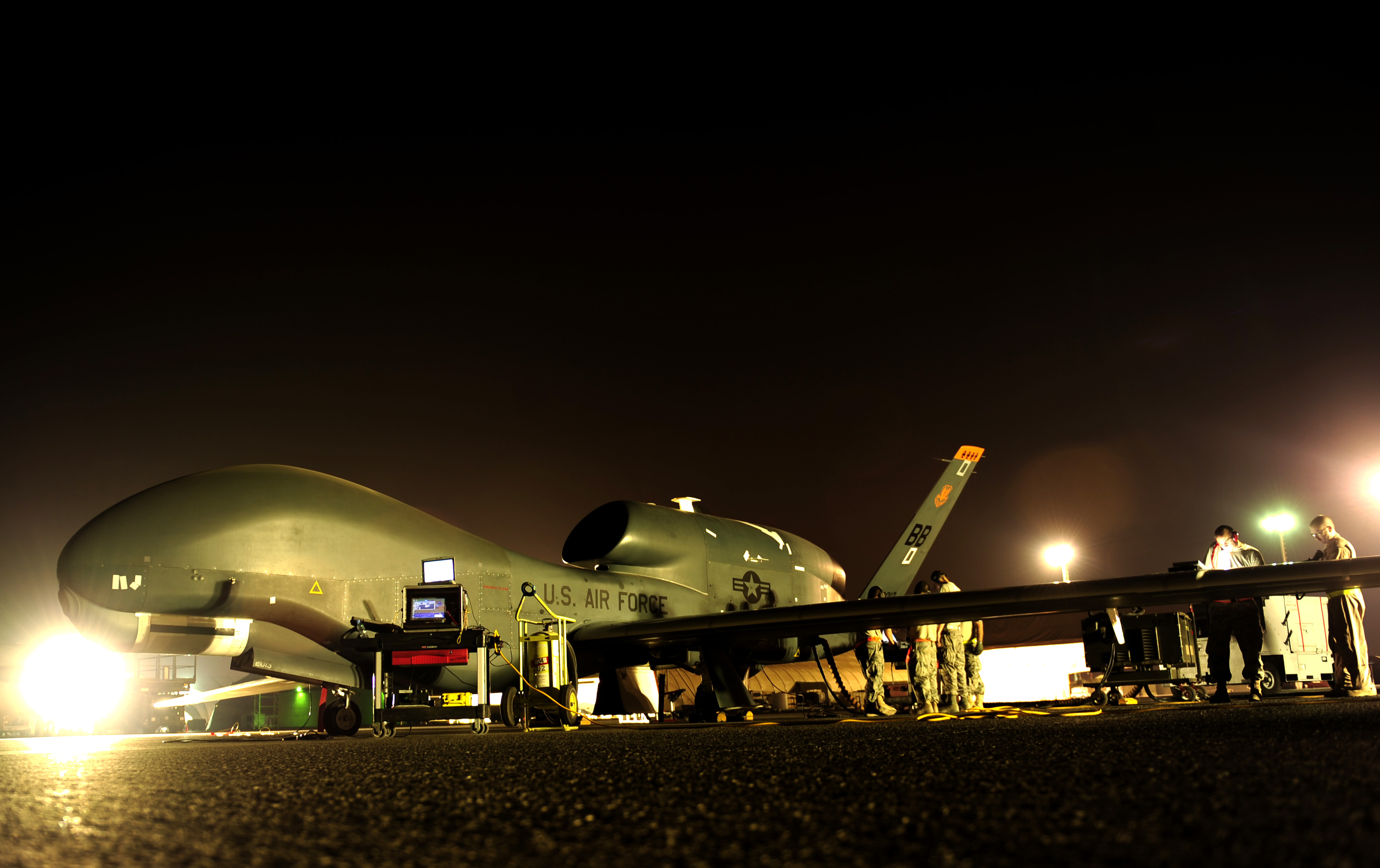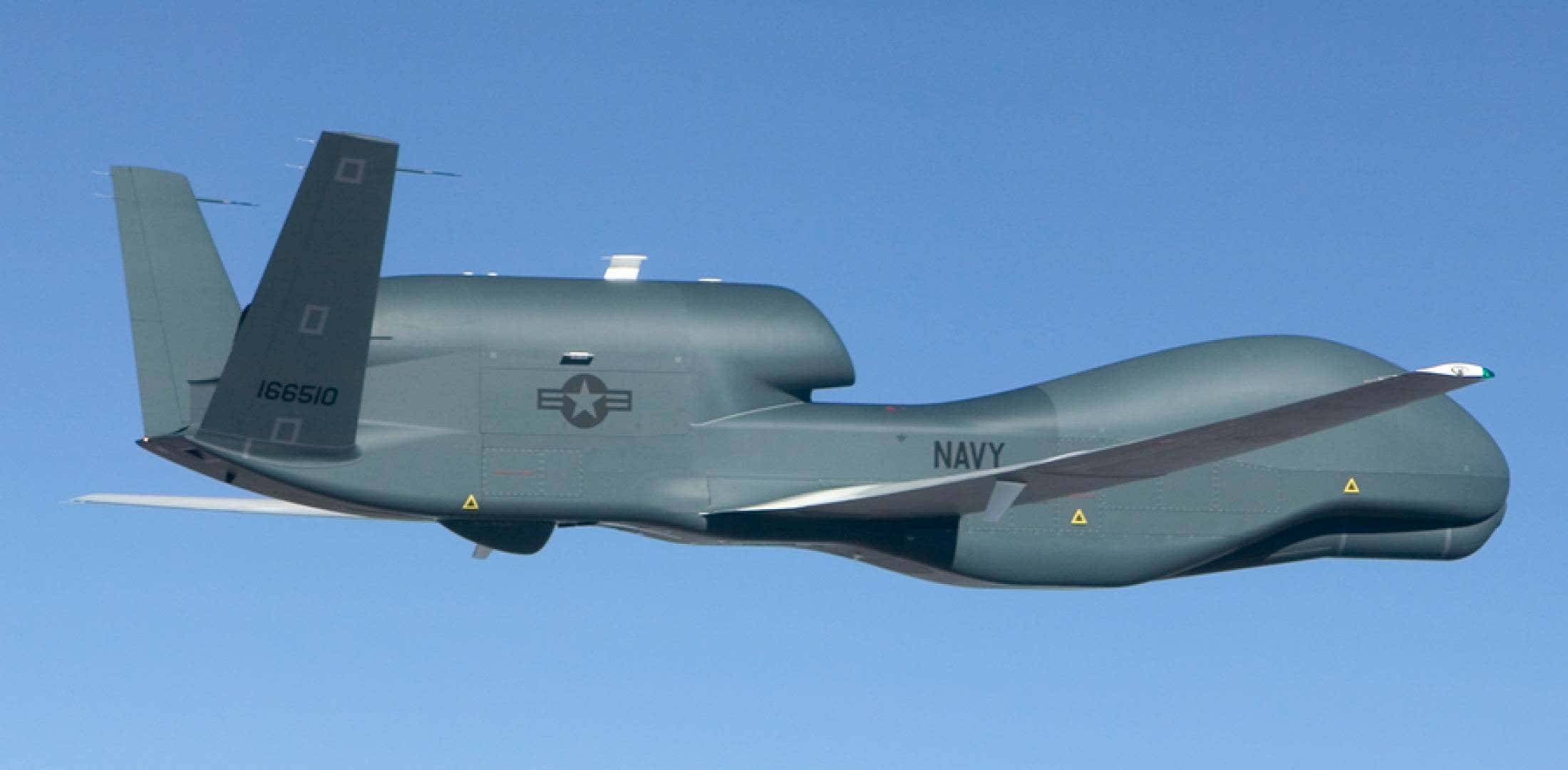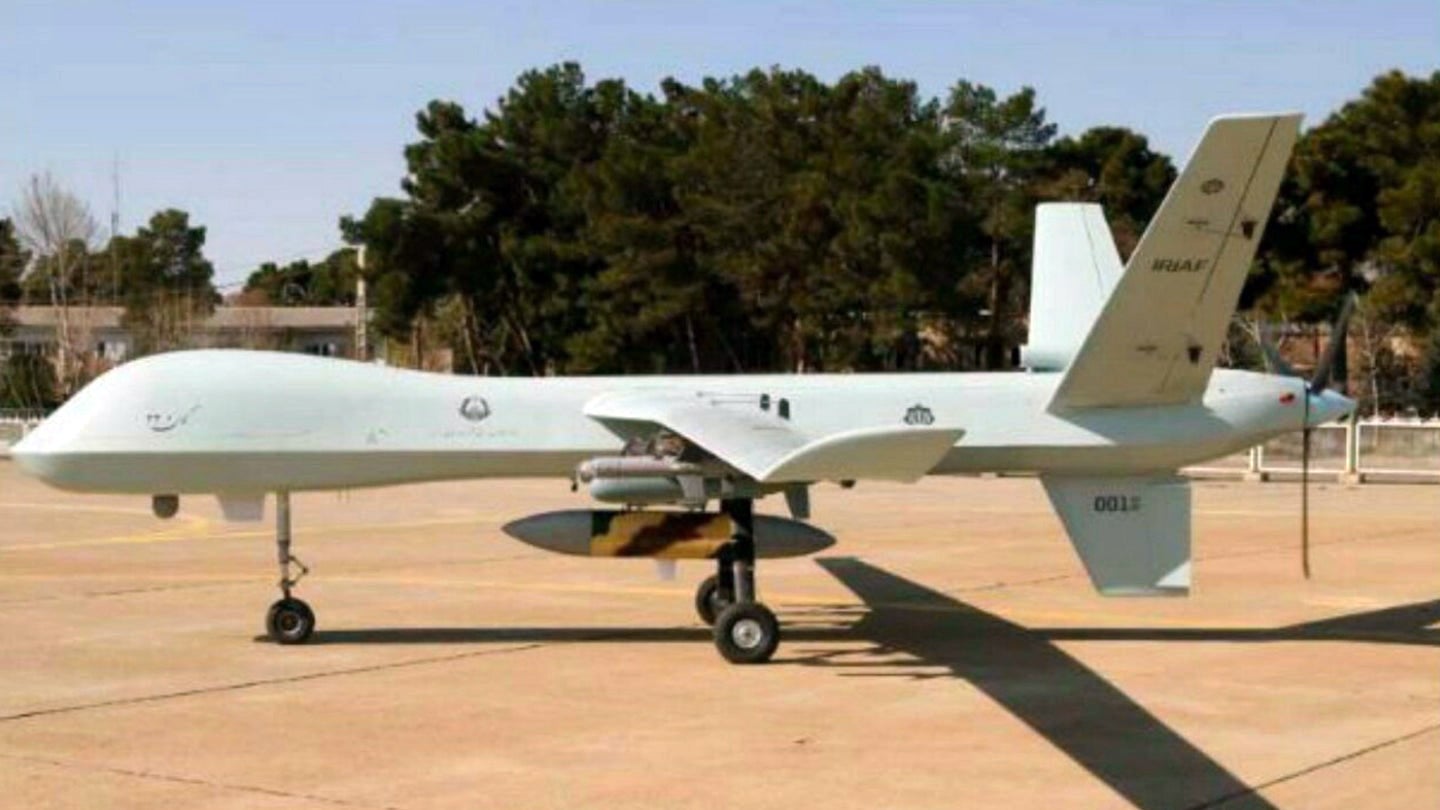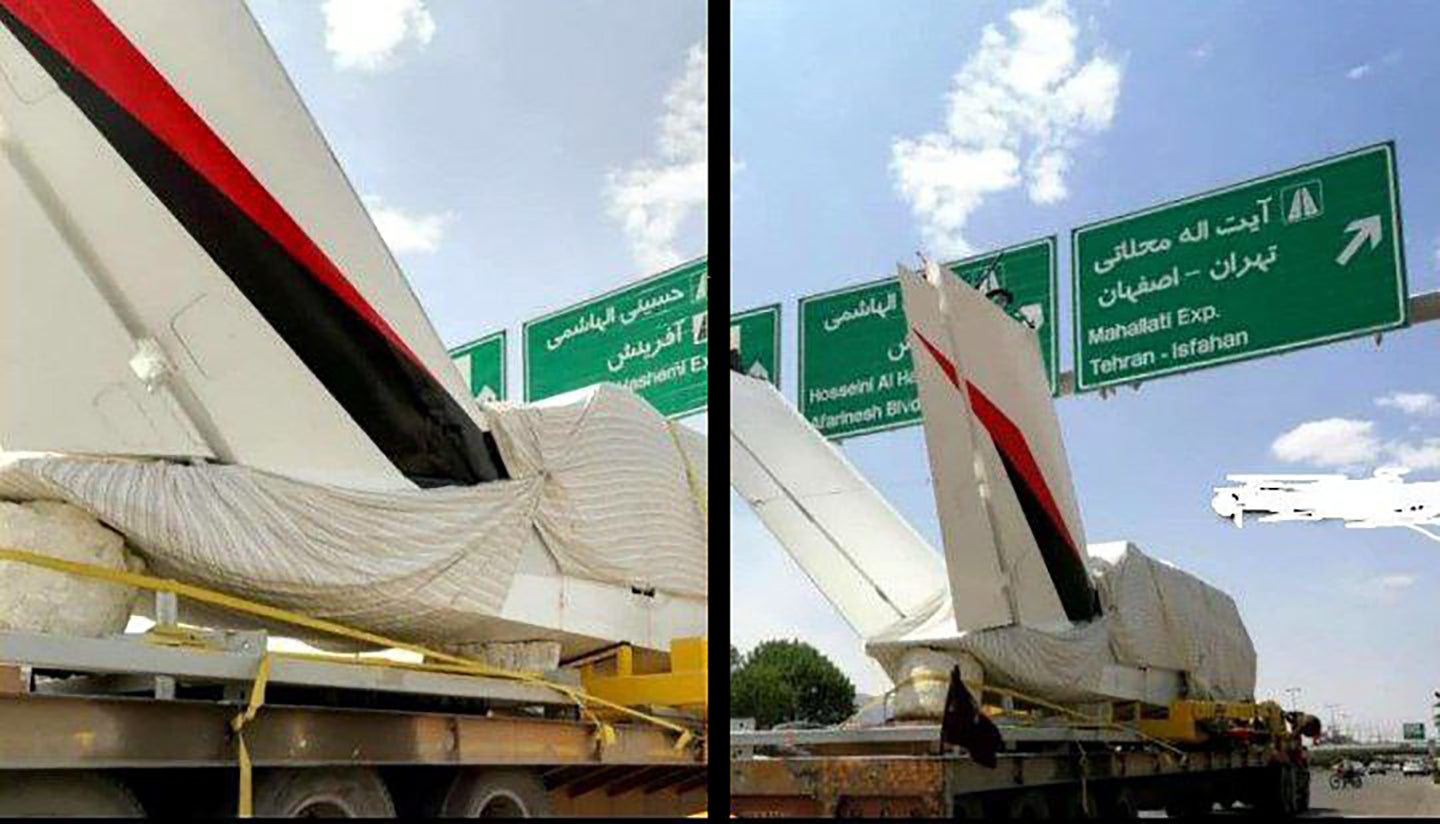Photos that have emerged from Iran apparently show components bearing at least a broad visual similarity to the RQ-4 Global Hawk high-altitude, long-endurance spy drone. A U.S. Navy RQ-4 was shot down by Iranian air defenses over the Strait of Hormuz in 2019. While the parts seen in the images are certainly reminiscent of the Global Hawk’s empennage in some respects, there is no guarantee that’s what they actually are. However, Iran does have a history of producing its own drones that are very loosely based on U.S. drone designs, including unmanned aerial vehicles supposedly derived from the RQ-170 stealth drone, one of which fell into its hands in 2011, as well as another that seems to be heavily inspired by the MQ-1 Predator. They have emulated others from manufacturers around the globe and even built drones out of U.S. manned jet designs.
The images in question first came to our attention yesterday and show what could be the rear fuselage portion of a Global Hawk-style drone, complete with outward-angled vertical tail fins, transported on a flatbed truck on an Iranian highway somewhere near Tehran. Providing that the photos are indeed legitimate, the shape of the possible drone component is partially concealed by tarpaulins. There is no sign of the engine that would normally be found between the tail fins, but that is likely a separate structural component. The fins themselves, which include movable rudders, are more vertically oriented than those on the RQ-4 but may have been arranged in this way for road transport. Furthermore, they also appear shorter than those on the Global Hawk. A flat ‘boat tail’ between the vertical tails is also visible, which is very similar to the one found on the Global Hawk and its derivatives. Otherwise, the drone-like payload on the truck is painted white, with a prominent black and red flash on the visible outer surface of the fin.
All in all, the possible clone of the rear portion of a Global Hawk is a mystery. It’s not even clear that the object is RQ-4-derived or even an unmanned vehicle, although the fins at the rear would really suggest this.

It’s possible, too, that this is a mockup of a Global Hawk intended for public display as part of an exhibit, or a military parade, which would echo previous Iranian efforts that have yielded a supposed “stealth fighter” as well as a miniaturized American aircraft carrier, both intended primarily for propaganda purposes. It’s conceivable that a full-size model of a Global Hawk could serve as the centerpiece of an exhibit commemorating the shootdown of one of these drones on June 20, 2019.
On that date, a U.S. Navy RQ-4N BAMS-D (Broad Area Maritime Surveillance-Demonstrator) was brought down by an Iranian surface-to-air missile, an episode you can read all about here. The drone had previously entered Iranian airspace near the Kouhmobarak district in Hormozgan province, according to Iran’s IRNA news agency. Official U.S. accounts, meanwhile, said that the BAMS-D was flying at “high altitude” and was around 21 miles from the Iranian coast at the time of the attack and that it fell into international waters.

Having recovered most of the wreckage of the BAMS-D from the waters off Iran, it’s not inconceivable that the country’s scrappy aerospace industry could have produced an airworthy or even just a taxi-able crude clone of the American drone. Some have posited this possibility in the past, although apparently without any confirmation from Iranian or other official sources. Once retrieved, the BAMS-D wreckage was revealed to the media, as seen in the following images:
Building a knockoff version of the RQ-4 that comes anywhere close to replicating the same capabilities as the original would certainly be a huge challenge. In this regard, drones in the class of the Kaman-22 — the Iranian UAV that’s apparently based on the MQ-1 Predator — combined with some features of the more advanced MQ-9 Reaper, are much more realistic in terms of development and production. Notably, the Kaman-22 also appeared several years after Iran showed an example of what was apparently a captured U.S. military Predator. Still, maybe a lower, shorter, and slower flying, smaller, and far less capable take on the Global Hawk could be within Tehran’s reach. Having a long-endurance drone adapted for medium-to-high-altitude maritime surveillance could be beneficial for Tehran, beyond it being a traditional propaganda win.

The Navy’s loss of an RQ-4N in 2019 was a serious propaganda coup for Iran, as well as a potential flashpoint in what was a significant period of tensions between Washington and Tehran. It would not be entirely surprising to now see Iran try and further capitalize on the success of this high-profile event.
While Iran has made copies of various items of military equipment in the past, including drones that share general configurations with captured designs, until we see more of this latest shape, we should probably reserve judgment.
Contact the author: thomas@thedrive.com
